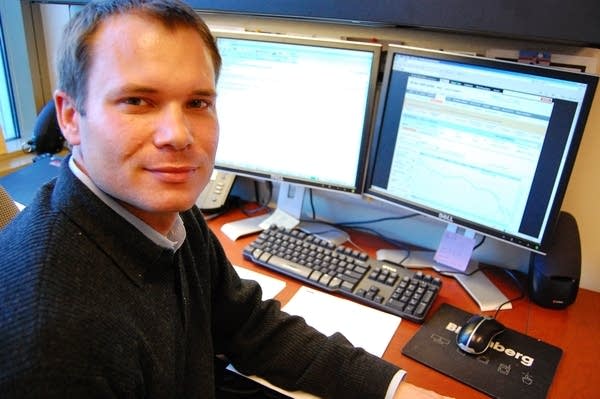College endowments take a big hit in down market

Jason Matz relies on the Wall Street Journal online to keep him up to date on the volatile stock market. On a recent afternoon Matz, the investment director for Carleton College, went into an hour long meeting thinking the market was pretty stable.
"When I come out of the meeting, the market was down 7 percent, and that's characteristic of what the stock market has done lately. It's been exceedingly volatile and wide swings on any given day, up to 10 percent."
But Matz doesn't let the wild stock market affect how he handles his job. He does exactly what most long term investors are being told to do.

"We're not radically changing our strategy, we're continuing to think long term...trying not to panic. We'd structured the portfolio so we're somewhat conservative, that doesn't mean that we're not experiencing absolute declines, but they could be worse."
Create a More Connected Minnesota
MPR News is your trusted resource for the news you need. With your support, MPR News brings accessible, courageous journalism and authentic conversation to everyone - free of paywalls and barriers. Your gift makes a difference.
Matz and other college investment officers learned from the market plunge of 2001. They adopted a more conservative investment strategy, reducing the amount of money they had in stocks.
That being said the recent losses to college endowments, which usually have some portion of their funds invested in the stock market, have been staggering.
Carleton's endowment was at $648 million on June 30th of this year. By the end of October it had fallen to $540 million. Some of that change represented spending by the college.

Typically Carleton and other colleges spend about 5 percent of their endowments annually on salaries, scholarships and other expenses.
The University of Minnesota spends 4.6 percent of its endowment each year.
The U of M's Consolidated Endowment Fund lost 12 percent since last year, falling from $1.25 billion to $1.1 billion dollars.
But chief investment officer Stuart Mason says like Carleton College, his department took action in recent years to reduce the endowment's risk in a downturn.

"In fact the public stock portion of the portfolio today is probably something in the order of 25 percent, whereas six years ago it would have been 85 percent."
Macalester College in St. Paul has also experienced gut wrenching negative returns in the last year, according to the college's investment officer, Craig Aase.
"It's about $550 million. And that's down from a peak of $700 million a year ago."
Institutional investors deal with those awful returns by reminding themselves that they're not playing the markets to make a quick buck, Aase says. This is the longest of long term investing.
"At the end of the day I'm an optimist," he says. "It'll be a long and slow recovery but it'll happen. Again, as a long term investor that's what we have to keep our eye on."
Here's also what investors keep their eyes on, the average return of their endowment's investments in the last five to 10 years. It's a good way to average out the numbers, and it takes the sting out of big dips in the market.
St. Thomas University's endowment lost $54 million in only three short months this summer. It was $480 million on June 30, by September 30th it was at $426 million.
Taking the long view is a better measure of the overall performance of the fund, says Mike Sullivan, St. Thomas' investment officer.
"Our 10 year number on June 30th was something like 7.5 percent. That's still light, our target is 8.5 percent over long cycles. But I think the point is we don't really react too strongly to either market value increases or decreases."
Individual investors could take some guidance from how college investment officers do their job, Sullivan says. Keep your cool in volatile market, take the long view on investments, and don't make drastic changes even when times are tough.
